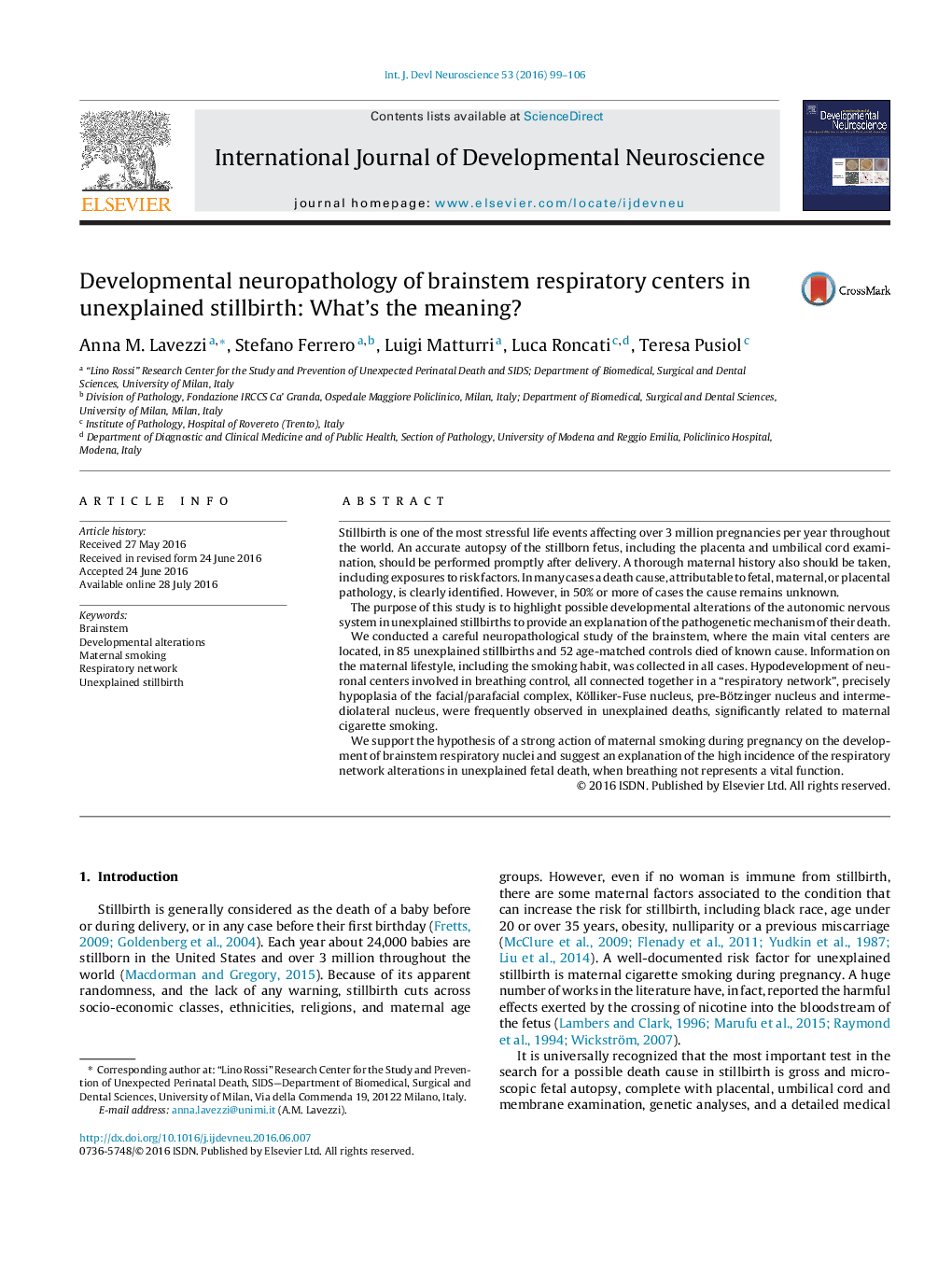| Article ID | Journal | Published Year | Pages | File Type |
|---|---|---|---|---|
| 2785620 | International Journal of Developmental Neuroscience | 2016 | 8 Pages |
•Stillbirth is one of the most stressful life events.•One-half to two-thirds of stillbirths cannot be attributed to a specific identifiable cause (unexplained stillbirths).•We reported the histopathological findings in the brainstem of a wide set of unexplained stillbirths.•Neuropathological developmental alterations of brainstem respiratory centers were very frequently observed.•We provided an explanation of the high incidence of these defects, when breathing is not essential to live.
Stillbirth is one of the most stressful life events affecting over 3 million pregnancies per year throughout the world. An accurate autopsy of the stillborn fetus, including the placenta and umbilical cord examination, should be performed promptly after delivery. A thorough maternal history also should be taken, including exposures to risk factors. In many cases a death cause, attributable to fetal, maternal, or placental pathology, is clearly identified. However, in 50% or more of cases the cause remains unknown.The purpose of this study is to highlight possible developmental alterations of the autonomic nervous system in unexplained stillbirths to provide an explanation of the pathogenetic mechanism of their death.We conducted a careful neuropathological study of the brainstem, where the main vital centers are located, in 85 unexplained stillbirths and 52 age-matched controls died of known cause. Information on the maternal lifestyle, including the smoking habit, was collected in all cases. Hypodevelopment of neuronal centers involved in breathing control, all connected together in a “respiratory network”, precisely hypoplasia of the facial/parafacial complex, Kölliker-Fuse nucleus, pre-Bötzinger nucleus and intermediolateral nucleus, were frequently observed in unexplained deaths, significantly related to maternal cigarette smoking.We support the hypothesis of a strong action of maternal smoking during pregnancy on the development of brainstem respiratory nuclei and suggest an explanation of the high incidence of the respiratory network alterations in unexplained fetal death, when breathing not represents a vital function.
Graphical abstractFigure optionsDownload full-size imageDownload high-quality image (197 K)Download as PowerPoint slide
